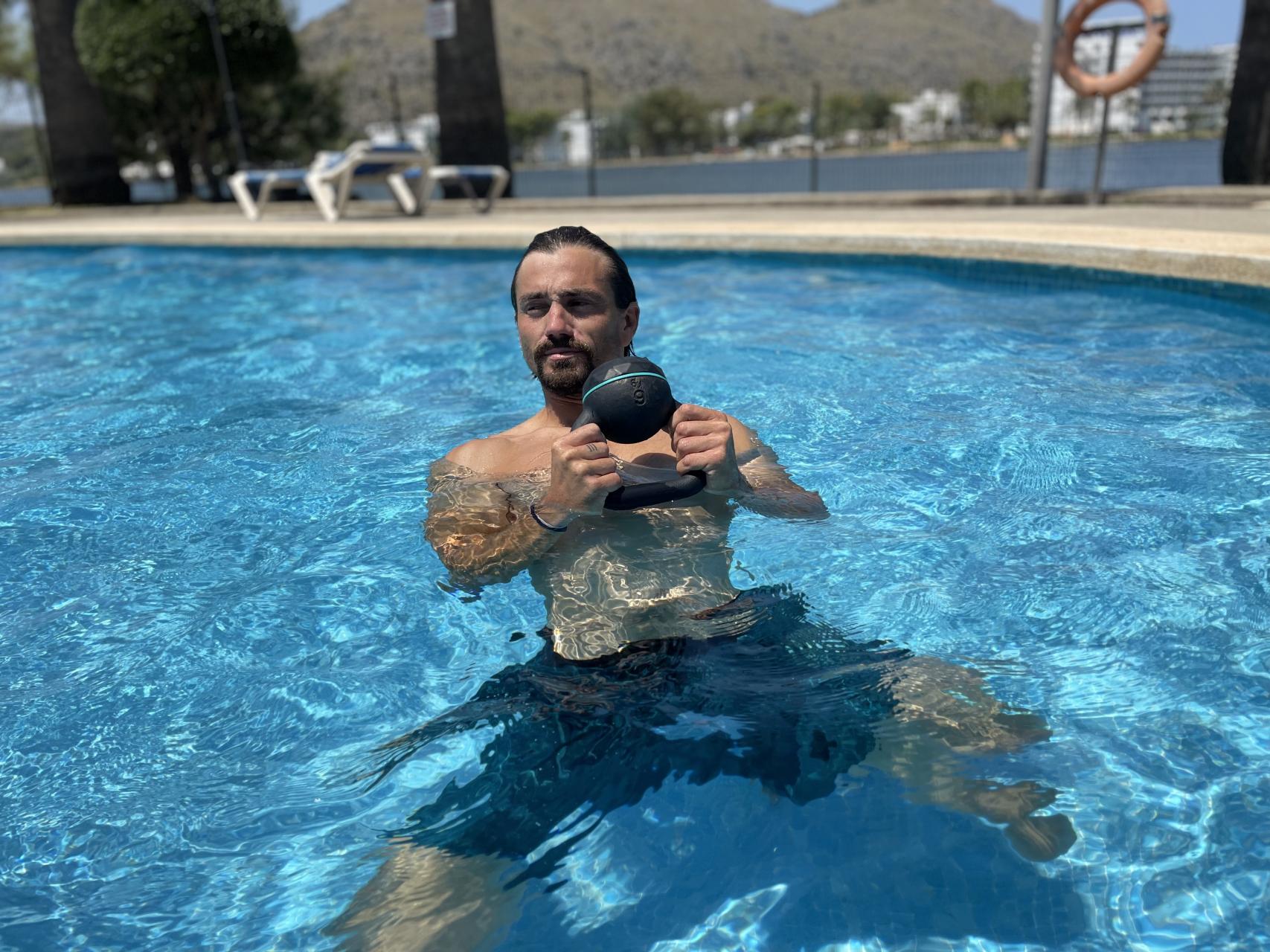Temperatures this week have been in the high 30’s across the island. The thought of building up a sweat when we’re already dripping in sweat is madness. To protect our bodies from the harmful effects of overheating and exhaustion, we are overcome with a feeling of laziness and fatigue. It’s simply too hard and too hot to exercise.
Unless that is, we are thinking about diving into cool water. As a personal trainer, part of my job is choosing workouts clients will enjoy. And thankfully, most clients these days have a swimming pool. So this week, I’ve been making the most of their facilities and getting fit whilst making a splash.

Last week, you may have read in this good paper that there is a boom in demand for pools, both permanent and portable. Aerial photos show an island dotted with turquoise squares, rectangles and circles. You don’t need a big garden to have a swimming pool big enough for a workout. A three-metre pool on your patio or terrace is ample (alternatively, you can put one up illegally outside on the street, as a family in the suburb of Camp Redó did last week. The culprits have since dismantled the pool on police orders).

You don’t need a massive budget either. You can get your hands on an oversized tub, complete with a pump, for a few hundred euros at Carrefour. They are a great way to cool off closer to home and get some much-needed summer exercise.
If you have a big, long pool, by all means, swim some lengths. Choose any swim style: breaststroke, backstroke, butterfly or front crawl- it’s all groovy, loosening and strengthening your joints, tendons and muscles, strengthening hearts and cleaning lungs. But lengths in a pool shorter than eight metres make me dizzier than looking at a hamster in a running wheel. That’s where a drop of hydrobics comes in handy.
Hydrobics brings aerobics to the water. It has all of the benefits of aerobics- like cardiovascular endurance and calorie burning, but has some added benefits. The water provides resistance, helping strengthen muscles and increase stamina (after twisting my torso against the dense water, I can feel my core muscles, abdominals and obliques).
Perhaps even more beneficial is the improved safety of hydrobics.

Waters natural buoyancy acts as a support or cushion, minimising muscle soreness and stress injuries, making hydrobics the ideal exercise programme for the elderly, overweight, pregnant, or physically impaired. Being low impact, hydrobics is fun and safe for all abilities.
I train many clients with high-intensity interval training (HIIT). Apart from increasing strength, endurance and stamina, these workouts put the body under just enough stress to activate our longevity genes and reduce epigenetic damage, helping us live healthier for longer.
Recently, I’ve been doing thirty-minute HIIT workouts in the water: 15 rounds of 1:40minutes work and 20 seconds rest. I introduce a new movement for each interval- hacky sacks, jogging, kicks, lunges, jumping squats, jumping jacks, alpine skiing, and water cycling (see photos and captions). The list is endless. I recommend working the arms in each movement, moving back and forth or side to side, pushing the water with your palm for maximum resistance.

A water level between hip and chest height is ideal, allowing us to work against gravity whilst still gaining all the resistance and safety benefits of exercising in water.
If your pool doesn’t have a shallow end, try treading water for a couple of minutes with your hands in the air or even carrying a weight. I’m a strong swimmer and not in bad shape, but I find treading water with a 6kg kettlebell exhausting. Of course, always choose the length of your workout, rest intervals, and movements to suit your fitness level and ability.
And don’t work out alone. Cramp, dizziness or extreme fatigue are always dangerous, but much more so in the water. It doesn’t matter if it’s shallow; there is a risk of drowning in a paddling pool. So this summer, stay safe, stay fit, and stay cool in your nearest swimming pool.






No comments
To be able to write a comment, you have to be registered and logged in
Currently there are no comments.